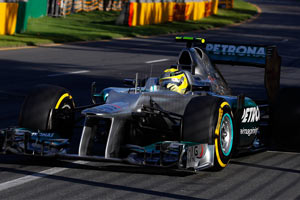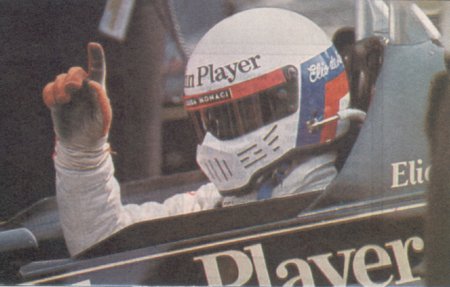OK - having seen the shot of the front of the chassis (where the nose connects), I would agree there is no ducting from the RW to the nose, so the DRS-activated blown front-wing is almost certainly a myth. (Not saying that a separate, passive blown front wing is out of the question, though...)
With that in mind, I would also agree with the far more logical suggestion that the ducts exposed when the DRS is active must be exits, not intakes, and the air is blowing across the rear wing main plane to stall it and reduce drag even further than the DRS alone. My only thought is that the air would be hard-pressed to affect the centre of the main plane, because the oncoming (external) air would deflect the ducted flow pretty strongly. How effective that would be, I have no idea, but I guess every little bit helps!
As suggested by Raptor22, this would only create a bigger front/rear imbalance, making the DRS less useful on corner exit during qualifying, for example, but perhaps they've found the trade-off in top speed on the straights to be worth that compromise. It would allow them to run a more aggressive main plane on the rear wing, which would help in the slow to mid-speed corners, where you wouldn't be using DRS anyway, and might help with rear tire wear in the race.
The intakes could be anywhere allowed by the rules, really, but it seems clear from previous images that there is a duct inside the rear crash structure that the wing mounts to that must channel the air into the beam wing and up the endplates (the reverse of the diagram from Scarbs). This suggests a fairly obvious intake location ahead of that - either up around the roll hoop, or integrated into the sidepod intakes. For that matter, Red Bull's ducts in the lower sidepod sides (the much-vaunted "tunnels") would probably work too - they are apparently "well advanced" in developing their own version after all.





